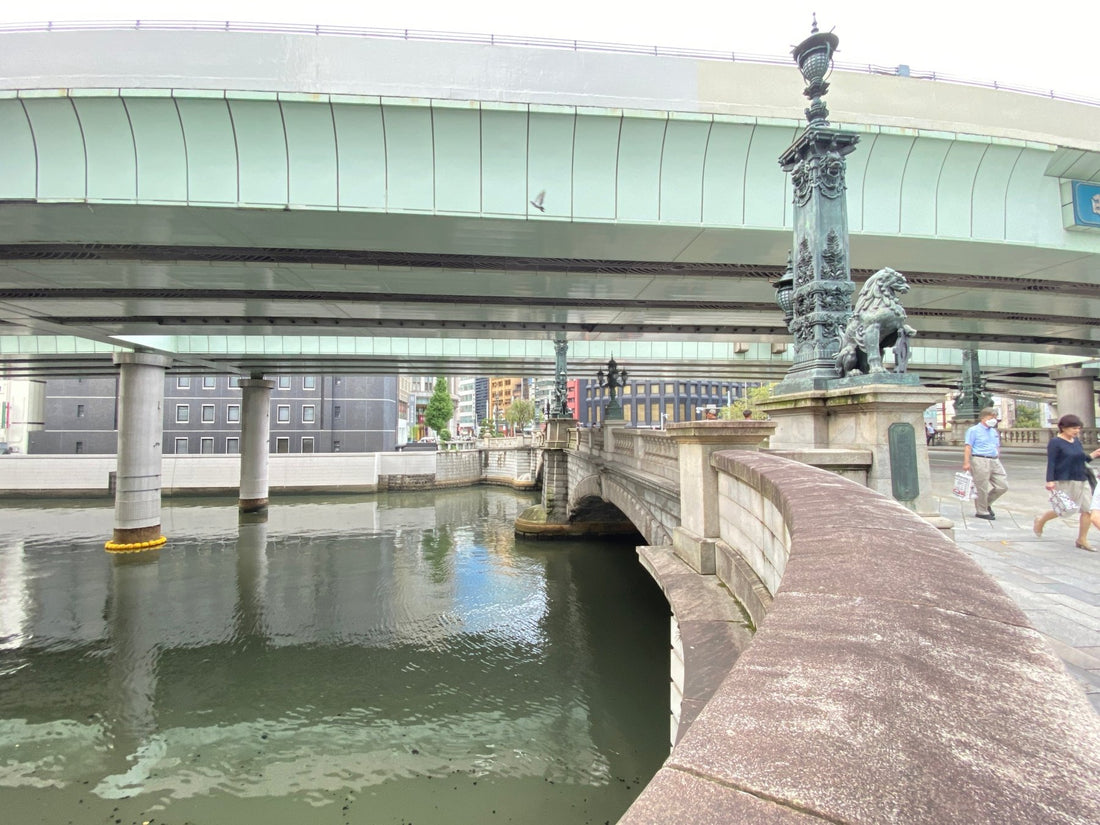
Granite and Tokyo Tour Series 2025 No.8 Tokyo Nihonbashi Bridge
Share
Introduction
On September 12, 2025, I visited Nihonbashi Bridge in Tokyo. Hidden under the elevated highway, this historic landmark still radiates an imposing presence. What makes it unique is that the current bridge, rebuilt in 1911, was constructed using Kitagi Stone, a granite renowned for its durability and beauty.
History of Nihonbashi


- The first Nihonbashi was built in 1603 under the order of Shogun Ieyasu Tokugawa.
- It became the starting point of the Five Routes, the heart of Japan’s road network during the Edo period.
- The current stone bridge was completed in 1911 as a two-span granite arch.
- In the Edo era, Nihonbashi was a wooden bridge depicted in ukiyo-e prints by Hokusai and Hiroshige, symbolizing commerce and daily life. The present granite bridge, made of Kitagi Stone, embodies both tradition and modernity.
What is Kitagi Stone?

Kitagi Stone, quarried from Kitagi Island in Okayama Prefecture, is a premium granite formed about 60 million years ago in the late Cretaceous period. Known for its fine crystal structure and resistance to weathering, it has been used in some of Japan’s most iconic buildings, including the National Diet Building and the restoration of Osaka Castle walls.
Architectural Beauty


- The granite pillars, balustrades, and arches of Nihonbashi show remarkable strength after more than a century.
- Bronze statues of lions and kirin (mythical creatures) highlight the harmony between stone and metal.
- The contrast between the historical granite bridge and the modern expressway above it reflects Tokyo’s unique blend of past and present.
Specifications
Nihonbashi Bridge
| Item | Details |
|---|---|
| Name | Nihonbashi Bridge |
| Location | Chuo City, Tokyo |
| First construction | 1603 (wooden bridge) |
| Current bridge | 1911 (Meiji 44) |
| Material | Kitagi Granite, bronze decorations |
| Structure | Two-span stone arch bridge |
| Features | Origin point of Japan’s national road network, Important Cultural Property |
Kitagi Stone
| Item | Details |
|---|---|
| Name | Kitagi Stone (Kitagi Granite) |
| Origin | Kitagi Island, Okayama Prefecture |
| Type | Granite |
| Color | Gray to bluish-gray |
| Formation period | About 60 million years ago (Late Cretaceous) |
| Features | Dense crystals, highly durable, weather-resistant |
| Main uses | Nihonbashi Bridge, National Diet Building, Osaka Castle restoration, monuments |
| Historical use | Transported by ship to Edo, used in Edo Castle walls |
| Workability | Hard yet suitable for carving and inscriptions |
Conclusion
Since its first construction in 1603, Nihonbashi has flourished as Japan’s symbolic business center. The current bridge, built with Kitagi Granite in 1911, remains standing strong more than a century later.
